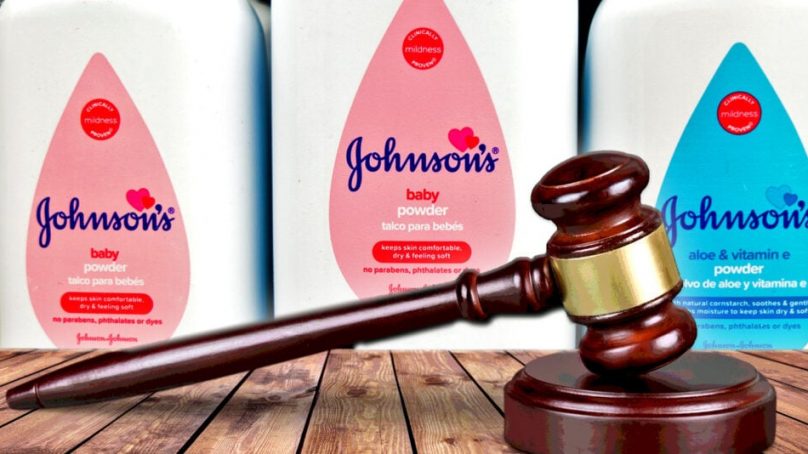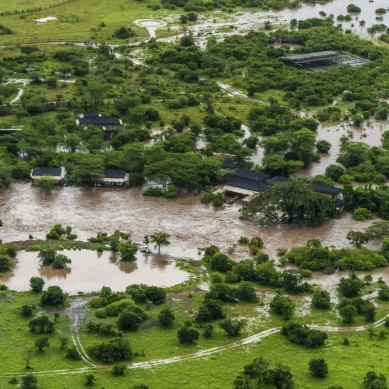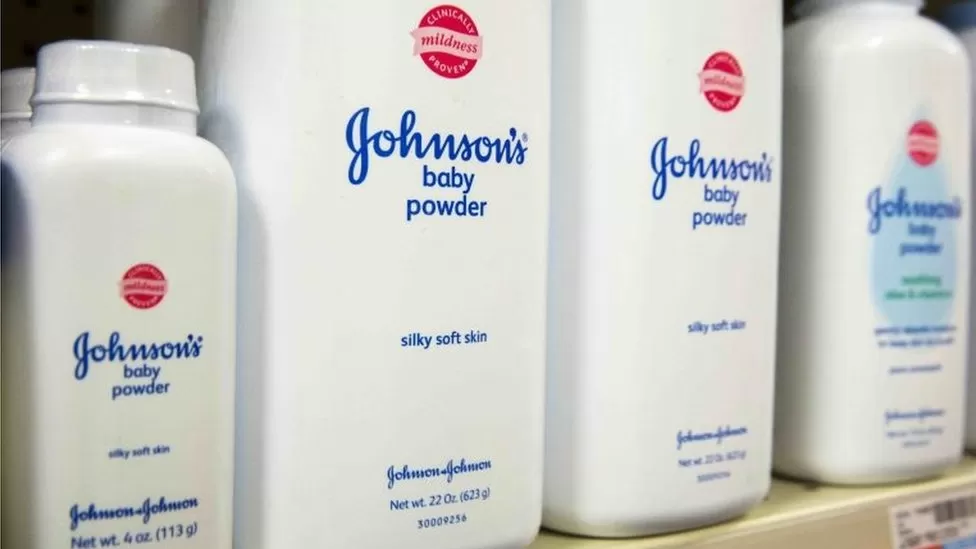
Johnson & Johnson (J&J) is facing more than 50,000 lawsuits in the US brought by people who claim exposure to asbestos in talcum-based Johnson’s Baby Powder products caused them to develop ovarian cancer or mesothelioma, two types of cancer linked to talc exposure.
J&J has paid out over $2 billion in settlements so far, and has spent roughly $4.5 billion defending and settling the talc litigation, the Wall Street Journal reports.
According to data compiled by Bloomberg, J&J has spent $178 million so far pursuing a controversial bankruptcy strategy that has failed twice. Using a move called the Texas Two Step, J&J attempted to spin off liability for talc settlements and jury awards to a new company that then declared bankruptcy. Critics have described the move as an abuse of bankruptcy laws and an attack on consumer protections.
Documents released at trial, and reported by Bloomberg and Reuters, suggest that J&J knew for decades that its talc supplies could be contaminated with asbestos, and that the company ramped up its marketing to African-American women and other high-use groups. J&J states on its Facts About Talc website that its talc-based baby powers are free of asbestos and safe to use.
This fact sheet describes cancer links to talc body products, key developments in this story and links to source materials. We are posting discovery documents from the J&J talc lawsuits and related documents here: Johnson & Johnson talc papers.
In a statement to US Right to Know, J&J said it will “vigorously litigate” the “meritless” talc cancer claims: “We empathize with anyone suffering from cancer and understand that people are looking for answers. We believe those answers can be better understood through science. Over 40 years of studies by independent medical experts around the world that support the safety of cosmetic talc.”
J&J launched its baby products business in 1894 with talc-based Johnson’s Baby Powder. It remains one of the company’s iconic products. Talc is a naturally occurring mineral that gives powdery products a silky, smooth feel. But some talc deposits are contaminated with asbestos, a mineral known to cause cancer.
Asbestos is often mined in the same areas as talc and is difficult to separate from talc.
Asbestos takes the form of thin fibres and fibre bundles that can be easily ingested or inhaled. There are six types: tremolite, actinolite, anthophyllite, chrysotile, amosite and crocidolite. These minerals have mostly been used in building materials and insulation, but their use has been significantly restricted in many countries due to serious health concerns.
Asbestos is a known human carcinogen, according to the US Environmental Protection Agency (EPA) and the World Health Organization’s (WHO) International Agency for Research on Cancer (IARC). There is “no safe level” of asbestos exposure, according to the WHO.
IARC classifies talc that contains asbestos fibres as “carcinogenic to humans,” based on evidence linking asbestos-contaminated talc to increased cancer risk and particularly ovarian cancer when used in the genital area.
IARC classifies the perineal use of talc body powder not containing asbestos as “possibly carcinogenic to humans” based on limited evidence from human studies of a link to ovarian cancer.
Internal J&J documents reported and posted by Reuters suggest that “from at least 1971 to the early 2000s, the company’s raw talc and finished powders sometimes tested positive for small amounts of asbestos, and that company executives, mine managers, scientists, doctors and lawyers fretted over the problem and how to address it while failing to disclose it to regulators or the public.”
The documents also “depict successful efforts to influence US regulators’ plans to limit asbestos in cosmetic talc products and scientific research on the health effects of talc.”
Documents reported by Reuters include: Reports by a consulting lab in 1957 and 1958 describe contaminants in talc from an Italian supplier as fibrous and “acicular” or needle-like, tremolite.
Reports from the 1970s into the early 2000s by J&J scientists, outside labs and J&J’s supplier identified contaminants in talc and finished powder products as asbestos (or “fibre-form” and “rods”).
In 1976, J&J told the US Food and Drug Administration (FDA) that no asbestos was “detected in any sample” of talc produced between December 1972 and October 1973 – but didn’t tell the agency that “at least three tests by three different labs from 1972 to 1975 had found asbestos in its talc – in one case at levels reported as ‘rather high,’” Reuters reported.
Lab reports from 1973-2003 reported finding asbestos fibres at levels below J&J’s detection limit.
J&J pushed back with a statement that the Reuters’ reporting “ignores that thousands of tests by J&J, regulators, leading independent labs and academic institutions have repeatedly shown that our talc does not contain asbestos.”
J&J said on its Facts About Talc website that reports from the 1970s about asbestos in its talc were preliminary, erroneous and based on unreliable testing methodology.
In 2019, the FDA reported finding asbestos in a sample of Johnson’s Baby Powder. J&J disagreed with these findings too; the company said it voluntarily recalled the product “out of an abundance of caution” and was unable to confirm the finding of asbestos with third-party testing.
In 2006, IARC classified cosmetic talc as “possibly carcinogenic” when used in the genital area. J&J then “looked for ways to sell more Baby Powder to two key groups of longtime users: African-American and overweight women,” Reuters reported in 2019.
According to an internal J&J marketing memo obtained by Reuters, the “right place” to focus was “under-developed geographical areas with hot weather and higher AA [African American] population.”
A 1992 J&J marketing memo, reported by Bloomberg, outlined “major opportunities and major obstacles” for sales of Johnson’s Baby Powder; it acknowledged that “negative publicity from the health community on talc (inhalation, dust, negative doctor endorsement, cancer linkage) continues.”
The same memo includes a recommendation to “investigate ethnic (African-American, Hispanic) opportunities to grow the franchise,” noting that these groups accounted for a high proportion of sales.
US Right to Know has posted internal J&J marketing memos and other documents related to the trials here: Johnson & Johnson talc papers.
In May 2020, J&J announced it would discontinue sales of talc-based Johnson’s Baby Powder products in the US, due to dropping demand that was “fuelled by misinformation around the safety of the product and a constant barrage of litigation advertising.” The company said it would continue selling talc-based powders elsewhere around the world.
Consumer and health groups protested that decision. In June 2020, Black Women for Wellness and 200 nonprofit groups from 50 countries asked J&J to “walk its talk on racial equity and valuing Black lives” by ending global sales of talcum-based baby powder.
In April 2022, 62 per cent of J&J shareholders voted for the company to conduct a racial justice audit. The independent audit will analyse the racial impacts of J&J’s policies, practices and products and recommend improvements.
The shareholder resolution was introduced by Mercy Investment Services and presented by Sister Ivette Diaz; it was the only J&J shareholder resolution to pass that year. A resolution demanding the company end global sales of talc products failed to garner enough votes.
In August 2022, J&J announced it would end global sales of talc-based baby powders in 2023, but would continue selling the products while supplies last.
As of October, more than 50,000 women are suing J&J with claims that their frequent use of talc-based baby powders caused them to develop cancer. J&J won several cases and settled many, but also lost massive jury awards.
In May 2018, a jury in St Louis awarded nearly $4.7 billion in damages to 22 women; appellate courts upheld the verdict but reduced total damages to about $2 billion. The US Supreme Court declined to hear J&J’s appeal.
J&J’s response to the lawsuits has been widely criticised as an assault on consumer rights. In October 2021, J&J tried to restructure the company with a manoeuvre to evade legal settlements called the Texas Two-Step. The Texas-based strategy allows companies to split into two separate entities and spin-off legal liabilities into one of them.
Although J&J enjoys robust sales revenues – with worldwide sales reaching $21.4 billion for the third quarter of 2023 – it created a new corporation on October 11, 2021 called LTL Management (the LTL stands for Legacy Talc Litigation) to pay claims from the baby powder lawsuits.
Two days later, LTL Management declared bankruptcy. The move temporarily halted lawsuits filed by cancer victims who said they were harmed by J&J’s baby powder.
Corporate America is taking note of this “brazen legal strategy,” reported Casey Cep in The New Yorker. “If companies can use the two-step to protect themselves from any and all consumer liability, even from states themselves, what’s left to hold them accountable?”
Internal company memos reported by Reuters offer an inside view of the company’s legal strategy — dubbed “Project Plato.” J&J had assigned more than 30 staff to the project.
“It is critical that any activities related to Project Plato, including the mere fact the project exists, be kept in strict confidence,” a company lawyer warned the team.
Another memo noted, “Appropriate messaging (internally and externally) will be required to avoid or mitigate misunderstandings about the nature of the restructuring and negative publicity.”
Before the bankruptcy filing, J&J faced costs of $3.5 billion in verdicts and settlements for the talc cancer cases, with thousands more cases pending. In its first bankruptcy filing, Reuters reported, J&J proposed giving LTL Management $2 billion to put into a trust to compensate 38,000 current plaintiffs, plus future claimants.
- The Defender report











